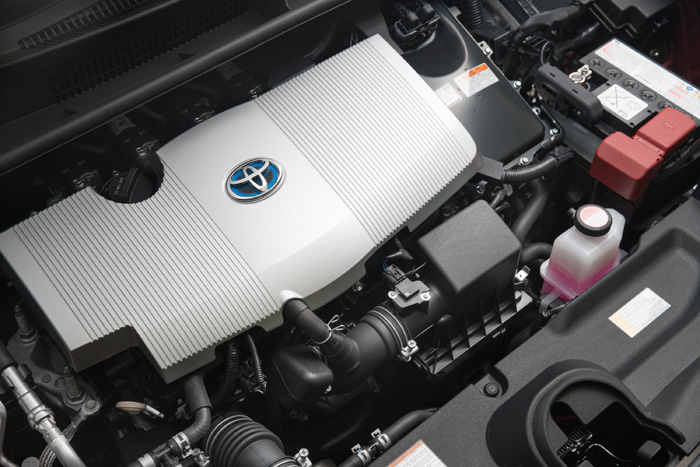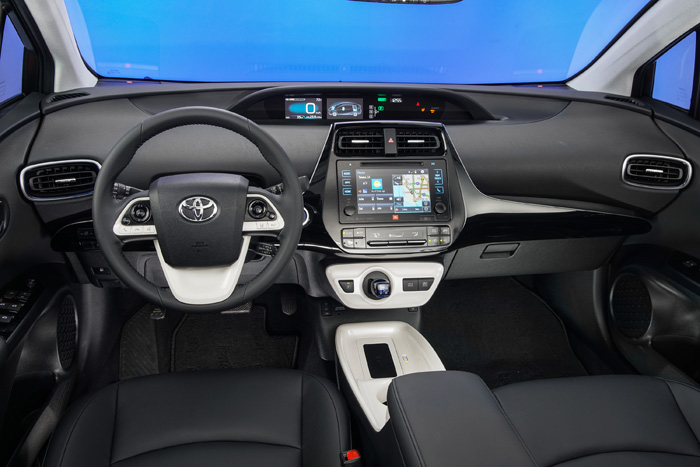If you’ve been watching TV the last several months you may have noticed the ads for the latest generation of the Toyota Prius. The ones where they show a Prius out maneuvering the police or where a Prius is “heck on wheels” (which I can’t watch without thinking of the Offspring’s “Pretty Fly (For a White Guy).” There’s a reason for these ads and the reason is because by any automotive standard the previous Prius’s (Prei?) were dogs. They were slow and clumsy and literally painful to drive (at least for me, after a 250 mile drive in my 2010 Prius I could hardly stand up). Of course they were extremely fuel efficient, very reliable and in no way your father’s
Oldsmobile … especially not his 4-4-2.
In Toyota’s own words:
Introducing the all-new 2016 Toyota Prius. Designed and engineered with an edge. And when four bumbling buddies choose the all-new Prius as their getaway car, they discover that it’s much more than just a comfortable ride wired with innovative safety technology — its power and performance are enough to turn any drive into an event worth sharing with the entire world.
So, has Toyota managed to square the circle? Have they made a gas sipper that is fun to drive? No.
According to Car and Driver the 2016 Prius returns a blazing zero to 60 time of 10.5 seconds. The 2010 version of the Prius was actually faster, going zero to 60 in 10.0 seconds*. For the record, If you’re like me and don’t spend a lot of time at the track, 10.5 seconds (or 10.0 seconds) is slow. Really slow. The Nissan cube was faster coming in at 9.1 seconds. Almost any car you care to name is faster. Think of the slowest car you ever owned and it was probably a lot faster (unless it was another Prius, of course).
Also, according to Toyota the new hybrid system has a net power output of: 121 hp (90kW) . This is less than the previous generation’s net power of 134 horsepower, but according to Kentarou Tomo of Toyota’s Hybrid Engineering Department “… power is probably down slightly but that performance is expected to remain the same due to the improved low-end torque.” So, after all is said and done, even Toyota admits the obvious, the new Prius is no quicker than the old.

The obligatory engine shot. I have no idea what’s going on underneath the cover. Thankfully, you won’t need to know either because the Prius is traditionally very reliable.
How about handling? The police commercial shows some pretty slick maneuvering. So is the turning radius tighter or the center of gravity lower? In fact, the turning radius has improved from 17.1 to 16.75 and the center of gravity is an inch lower. According to Toyota the turning circle diameter, curb to curb (ft.) is 33.5ft. (except in the Touring edition where it actually increases to 35.4ft). Last year’s Prius had a turning circle diameter of 34.2. For comparison, the Nissan cube (not a car noted for its handling) had a turning circle of 33.4. The point is 33.5 ft is a large turning circle.
To help stabilize the Prius,Toyota added a new control-arm rear suspension and tuned the power steering to provide more “road feel” but I drove one and it just isn’t enough. Mostly what you’ll notice is the seats are more comfortable and the new Prius is noticeably quieter than the previous generation – unless it is accelerating – then it has the same annoying engine whine as before.

The seats are a lot more comfortable and the gauges have improved, they are much easier to read than the previous generation’s (especially when you’re wearing sun glasses).
All this is not to say the Prius is a bad car. It is, in fact, a great car. It just isn’t a sporty car and it is a mistake for Toyota to try and sell it as one. Sell the Prius for what it is, an extremely reliable, fuel efficient car and now one that is more comfortable than it has ever been before. Just don’t say it’s sporty.



